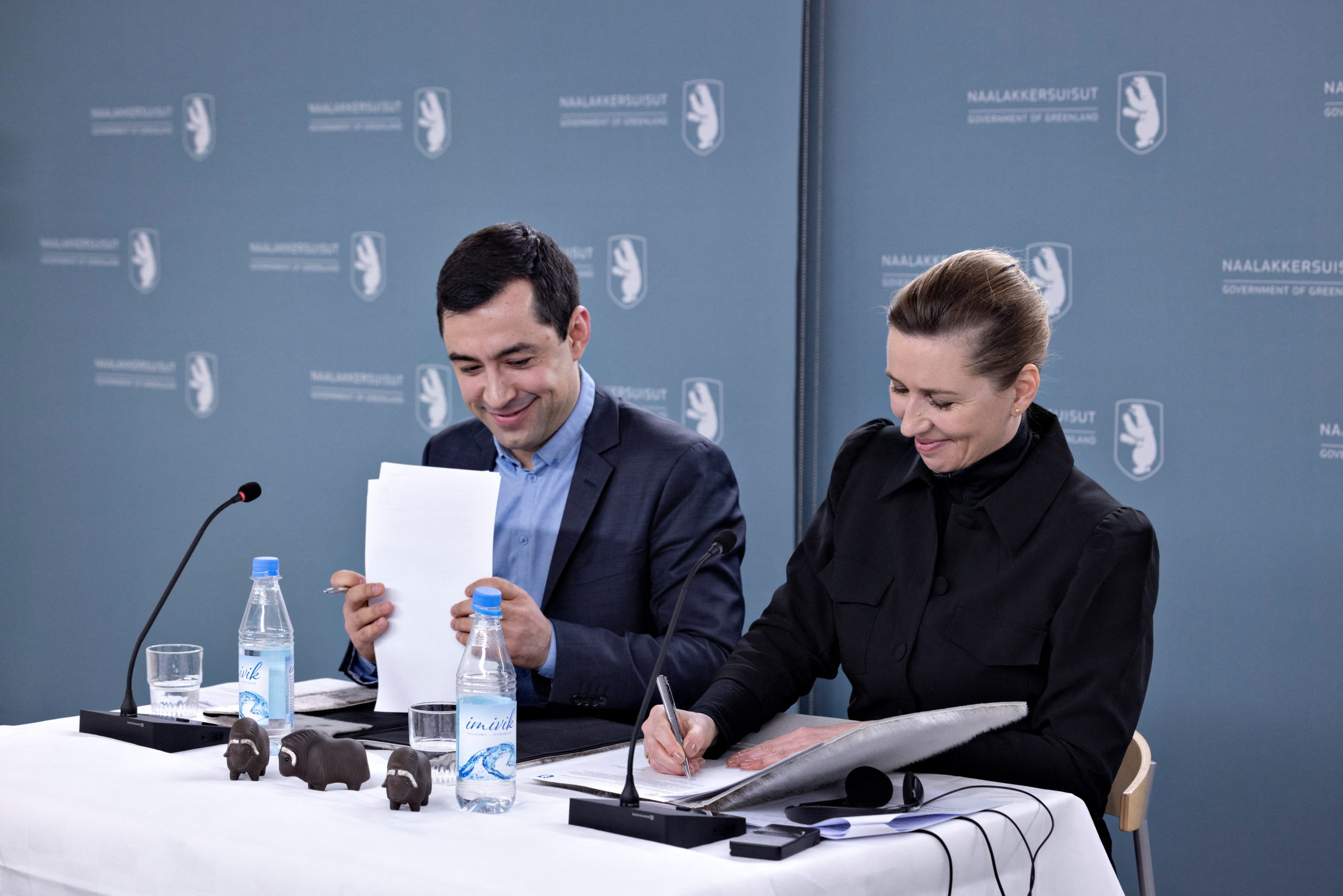Denmark to fund major hydropower projects in Greenland
Greenland looks to a greener energy supply months after signing climate pledge.

Greenland and Denmark announced a new funding agreement for two major hydroelectric power plants in Greenland on Tuesday.
Múte B. Egede, prime minister of Greenland, and Mette Frederiksen, prime minister of Denmark, signed a declaration of intent for Denmark to lend funds during Frederiksen’s visit to Greenland’s capital, Nuuk.
In November, Greenland’s legislature approved the projects, which will upgrade an existing facility in Nuuk and create the country’s sixth hydroelectric plant to supply the towns of Qasigiannguit and Aasiaat.
The projects are expected to cost up to 3.1 billion Danish kroner (about $480 million).
Greenland now produces about 70 percent of its energy from sustainable sources, and these projects will increase that share to 90 percent.
However, renewables account for a relative small portion of Greenland’s energy consumption, with 82 percent provided by fossil fuels, including diesel, gasoline and oil. That’s because many small settlements run diesel generators, and the island is largely dependent on air and ocean shipments that can be fuel-intensive.
Greenland government signed the Paris agreement on climate change in November 2021, resolving to reduce emissions and pollution from fossil fuels.
Climate change has had massive effects on the island, and one effect, according to a recent study, is that its ice sheet is generating vast amounts of potential hydroelectric energy because of accelerated melt.
The loan is a sign of confidence from the Danish government in Greenlandic green energy, and it could spur further private investment in the sector, Mads Qvist Frederiksen, the director of the Arctic Economic Council, told ArcticToday.
“One way to attract investors is if the public sector — the government and public institutions — get skin in the game,” he said. “It’s a showcase of what is possible.”
Greenland is rich in renewable resources, including hydropower, wind, and solar energy, and it has the potential to become a green energy hub, especially given its location, Frederiksen said.
“In the future, the fuel in shipping is not going to be from diesel, but it will be from what is called hydrogen, ammonia, or power-to-x — one of the three,” he said.
“But this will take massive investments — more than what we have just seen now with the loan.”
And there’s the risk of “overheating” the economy during a concurrent boom in buildings and airport construction with a limited workforce, Frederiksen said. “The main challenge here is, can you recruit enough labor force? And that’s a challenge anywhere in the Arctic.”
Next, Greenland will solicit bids for the projects. Companies will gain more experience working on this project, which could translate to a more skilled workforce for future projects, he said.
“You will have expertise coming in, people will get experience constructing and building this power plant, and then hopefully it can inspire and help make the business case for future projects.”